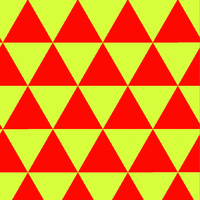Simplectic honeycomb

Alright kiddo, let's talk about something called a simplectic honeycomb!
Imagine you have a bunch of little balls, like marbles, and you want to arrange them in a special pattern. In this pattern, every ball is surrounded by six other balls, forming a hexagon shape. Also, no two balls can touch each other directly. They can only touch other balls through a thin layer of space in between them.
Now imagine that each ball represents a point in space that can move around freely. We call this space "phase space" because it shows all the different possible states that a physical system can be in, like position and momentum.
The balls themselves represent the value of two important variables called "position" and "momentum" that describe the state of the system. By arranging them in this special pattern, we create a lattice-like structure where every point in space is represented by one and only one ball.
This special lattice is called a "simplectic honeycomb" because it has some unique properties that make it very useful in physics and mathematics. One of these properties is that it preserves a special type of mathematical relationship called "symplectic structure" that is important in describing the behavior of physical systems.
So, a simplectic honeycomb is a special arrangement of points in space that represent the position and momentum of a physical system. It has a unique structure that is important for understanding how these systems behave, and it's called a "honeycomb" because it looks like a beehive with hexagonal cells!
Imagine you have a bunch of little balls, like marbles, and you want to arrange them in a special pattern. In this pattern, every ball is surrounded by six other balls, forming a hexagon shape. Also, no two balls can touch each other directly. They can only touch other balls through a thin layer of space in between them.
Now imagine that each ball represents a point in space that can move around freely. We call this space "phase space" because it shows all the different possible states that a physical system can be in, like position and momentum.
The balls themselves represent the value of two important variables called "position" and "momentum" that describe the state of the system. By arranging them in this special pattern, we create a lattice-like structure where every point in space is represented by one and only one ball.
This special lattice is called a "simplectic honeycomb" because it has some unique properties that make it very useful in physics and mathematics. One of these properties is that it preserves a special type of mathematical relationship called "symplectic structure" that is important in describing the behavior of physical systems.
So, a simplectic honeycomb is a special arrangement of points in space that represent the position and momentum of a physical system. It has a unique structure that is important for understanding how these systems behave, and it's called a "honeycomb" because it looks like a beehive with hexagonal cells!
Related topics others have asked about:
